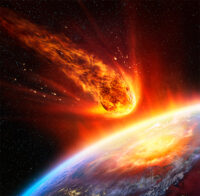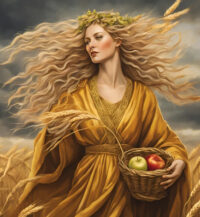To stave off the impending collapse of planetary ecosystems under the twin onslaughts of global warming and human overpopulation that are rapidly eradicating all forms of life, I wanted to make sure I was properly recycling.
So I dug out my copy of the four-page “Single-Stream Recycling Guide” from Sonoma Garbage Collectors for a quick review of recycling protocols. I want to be certain I’m putting the Right Stuff in the Right Can so as not to cause extra work for employees at The Dump or inadvertently pollute the oncoming global tsunami of human filth, garbage, stench and trash.
I can imagine nothing more humiliating than to have the garbage truck disgorge its contents at The Dump only to have a sharp-eyed bulldozer operator spot a forbidden wine cork thoughtlessly left in one of my empties. I shudder to think of trying to explain to a judge why the truck driver spotted a fluorescent tube sticking out of my can. Like many, I worry that the plastic bag found responsible for the death of the last Great Sperm Whale will somehow be traced to my house.
Fortunately, all households have been provided a copy of the “Single-Stream Recycling Guide.” If not carefully studied, however, one could find oneself charged with felony dumping. To avoid that, here are just a few of the important Three-Can recycling Guides that should be carefully followed:
First, Blue Can Protocol. All bottles, cans & containers going into the Blue Can must first be ‘cleaned and rinsed.’ No dirty beer cans, half-empty yogurt cups, etc., can be allowed to pollute the pristine County Dump. So run all containers through the dishwasher (sanitary rinse cycle) before tossing them (loose, not bagged) in your Blue Can.
Paper and cardboard are OK – newspaper, envelopes, phone books, etc. But not shredded paper; paper containing your SS number and banking information should remain intact and legible. [Warning: don’t even think about burying shredded paper in the Big Green yardwaste can]. Also, napkins, paper towels or tissues with any Yuk! on them are not allowed in the Blue can, not even if cleaned, rinsed, ironed and folded; they go in the Little Green can. Cardboard boxes are OK if cut into small pieces. But not pizza boxes (even if cut, cleaned and rinsed) and no blueprints, waxed paper or photographs. Check.
Some final Blue Can notes: If bottles & other containers have lids, leave the lids on the container, unless the lids are four inches in diameter or larger, in which case you can toss them in loose. Other things OK for the Blue Can include tricycles, toys, infant car seats (remove the fabric) and plastic pots. But NO ceramics! And definitely no styrofoam, packing peanuts, HDPE or PVC pipes, plastic bags, cellophane, plastic food wrap, drinking straws, fluorescent lamps or ‘hazardous waste.’ Incandescent, halogen & LED bulbs are presumably OK, as are empty paint & aerosol cans, presumably cleaned and rinsed.
Note: ‘Hazardous waste’ is undefined. It presumably includes leftover dynamite, but not the remains of the meal that sent your 12 dinner guests to the ER last week with food poisoning.
Next time we’ll cover checklists for the Little Green (garbage) and Big Green (yard waste) cans. Here’s a quick preview:
~ Batteries and radioactive waste are not allowed in either.
~ Decomposing corpses go in Little Green.
~ No palm fronds, bamboo or lawn sod in Big Green, even if cleaned and rinsed.




Be First to Comment